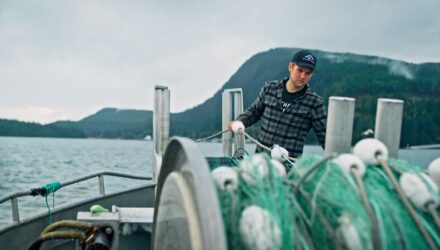ASMI Technical Director: No Tangible Human Health Risk from Fukushima Wastewater Releases

RE: Release of treated wastewater from Fukushima Nuclear Power Plant
August 29, 2023 – In 2011, an earthquake and subsequent tsunami led to the meltdown of the Fukushima Daiichi Nuclear Power Plant. This disaster caused radiation-contaminated water to seep into the ocean near the plant. On August 23, 2023, Fukushima began releasing treated wastewater into the Pacific Ocean as part of the ongoing effort to restore the site and prevent unplanned releases of wastewater.
The comprehensive scientific consensus, combined with analysis of numerous fish species, such as Alaska cod, pollock, halibut, migratory species like salmon, and others, concludes there is currently no tangible human health risk from these releases. The State of Alaska, along with partners in the federal government, as well as sovereign foreign States, international organizations, and non-governmental organizations have performed extensive monitoring and testing. All have found no cause for concern regarding human health. The Pacific Ocean’s ability to quickly dilute radioactive materials to acceptable drinking water levels within miles of Fukushima has been demonstrated by numerous studies.
These controlled releases of wastewater from Fukushima are heavily filtered to remove all but trace amounts of tritium. Tritium rapidly breaks down in living tissue since it is a hydrogen molecule and can only be harmful in exceptionally large doses. The levels of tritium in the released wastewater are close to that of natural background radiation, and thousands of times lower than the levels for safe consumption in food and drinking water. Japan has welcomed the International Atomic Energy Agency (IAEA) to evaluate and monitor the entirety of the process, from design to implementation, with real-time updates and recommendations to the international community. The IAEA has stated that the discharge of Fukushima’s treated water would have “negligible radiological impacts on the people and the environment.” Nuclear plants worldwide have similar practices and regularly conduct controlled release of diluted tritium, including plants in the United States and China at higher levels than what is being released from Fukushima.
Regardless of the minimal risk, actions have been and are being taken to monitor and evaluate risk going forward. The U.S. (handled jointly through the FDA, EPA, and NOAA) is actively monitoring for radioactive compounds in both fish and water, with an immediate activation notification system in the extremely unlikely event of detecting something of concern.
Despite federal statements that no systematic food monitoring is necessary, Alaska’s Department of Environmental Conservation, in conjunction with the FDA, implemented the Fish Monitoring Program in 2014. The program systematically evaluates Alaska’s fish for a variety of contaminants, including radionuclides. Through April 11, 2023, no detectable levels of radiation have been found in Alaska fish.
Alaska understands the importance of assuring consumers that Alaska seafood is safe to eat. Based on the scientific consensus from multiple independent sources, the robust steps being taken to minimize risk, and Alaska’s stalwart commitment to ongoing monitoring, consumers can trust that wild Alaska seafood remains safe and is one of the best dietary choices once can make for their health.
John Burrows,
Technical Director
Alaska Seafood Marketing Institute



